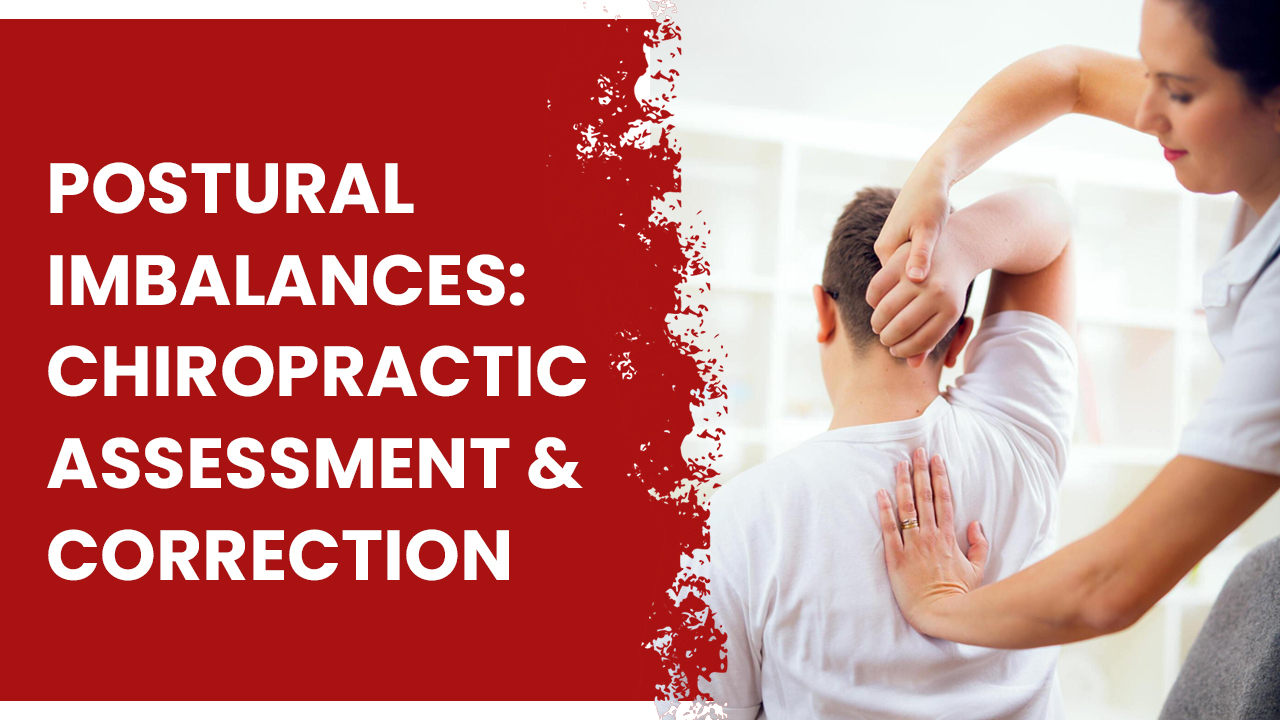Chiropractor For Leg Pain: Natural Solutions And Relief

Chiropractic care encompasses a holistic approach to health, focusing on the alignment of the spine and its impact on overall well-being. Leg pain, stemming from a variety of causes such as muscle strain, nerve compression, or injury, can significantly disrupt daily life and mobility. Seeking treatment from a chiropractor for leg pain is essential, as chiropractors specialize in diagnosing and addressing musculoskeletal issues, including those affecting the legs. Through manual adjustments, soft tissue therapy, and tailored rehabilitation exercises, chiropractors provide effective solutions to alleviate leg pain and restore optimal function. Emphasizing patient-centered care, chiropractic solutions aim not only to relieve pain but also to enhance overall quality of life. Therefore, for individuals experiencing leg pain, consulting a chiropractor for comprehensive and personalized care is highly recommended. Understanding Leg Pain Leg pain can arise from various sources, including common causes such as muscle strain, nerve compression, or injury. Muscle strain, often occurring due to overexertion or sudden movements, can result in localized discomfort and stiffness. Sciatica is one example of nerve compression that can result in shooting pain down the leg along with tingling or numbness. Injuries like fractures or sprains can manifest as leg pain, characterized by swelling, bruising, and difficulty bearing weight. Associated symptoms of leg pain can include weakness, cramping, and a limited range of motion. The impact of leg pain on daily life and mobility can be profound, affecting routine activities such as walking, standing, or even sitting comfortably. This can lead to challenges in performing work tasks, participating in physical activities, and enjoying leisure pursuits. Moreover, persistent leg pain can disrupt sleep patterns and contribute to emotional distress, including frustration and a decreased quality of life. Therefore, understanding the causes, symptoms, and consequences of leg pain underscores the importance of seeking appropriate treatment, including consultation with a chiropractor specializing in leg pain management. Role Of Chiropractic Care Chiropractic care operates on the principles of promoting the body’s natural ability to heal itself and maintaining proper alignment of the spine to ensure optimal nervous system function. Chiropractors employ a variety of techniques, including manual adjustments, spinal manipulation, and soft tissue therapy, to address misalignments, or subluxations, that may contribute to leg pain. Through thorough evaluation and assessment, chiropractors diagnose the underlying causes of leg pain, which may involve physical examinations, reviewing medical history, and possibly utilizing diagnostic imaging such as X-rays or MRI scans. Treatment typically involves targeted adjustments to restore proper alignment, alleviate pressure on nerves, and improve blood flow to affected areas. Additionally, chiropractors may recommend complementary therapies such as rehabilitative exercises, stretching routines, and lifestyle modifications to support long-term pain management and enhance overall mobility. The benefits of treatment from a chiropractor for leg pain extend beyond mere pain relief, encompassing improved range of motion, enhanced flexibility, and a better quality of life for individuals seeking natural, non-invasive solutions to their discomfort. Examination And Assessment In the examination and assessment phase of a chiropractor for leg pain, the initial consultation and patient history play a pivotal role in understanding the individual’s medical background, lifestyle factors, and the onset and progression of their leg pain. Chiropractors conduct thorough interviews to gather pertinent information, including past injuries, medical conditions, and any previous treatments attempted. Subsequently, physical examination techniques are employed to assess the affected areas, such as the lower back, hips, and legs, to identify any misalignments, muscle imbalances, or signs of inflammation. These may involve orthopedic tests, range of motion assessments, and palpation to pinpoint areas of tenderness or restricted movement. Depending on the findings, chiropractors may recommend diagnostic tests and imaging modalities like X-rays, MRI scans, or CT scans to further evaluate the underlying structural issues contributing to the leg pain. By integrating comprehensive examination and assessment strategies, chiropractors can develop tailored treatment plans to address the root causes of leg pain and promote optimal healing and recovery. Modalities Of A Chiropractor For Leg Pain A chiropractor for leg pain encompasses a multifaceted approach aimed at addressing underlying issues and promoting optimal healing and recovery. Spinal adjustments and manipulations serve as a cornerstone of chiropractic care, targeting misalignments in the spine to alleviate pressure on nerves and restore proper function. In addition, soft tissue therapy techniques such as massage and trigger point therapy are utilized to release tension, reduce inflammation, and improve blood flow to affected muscles and ligaments. Rehabilitation exercises and stretches play a crucial role in strengthening muscles, improving flexibility, and enhancing overall stability to prevent future injuries and promote long-term pain relief. Moreover, chiropractors provide lifestyle recommendations tailored to each individual, including ergonomic changes to improve posture, dietary modifications to support musculoskeletal health, and stress management techniques to optimize overall well-being. By incorporating these diverse modalities into treatment plans, chiropractors offer comprehensive care to address the complex nature of leg pain and empower patients to achieve lasting improvements in their quality of life. Safety And Precautions Safety and precautions are essential considerations in chiropractic treatment, particularly when addressing leg pain. Potential risks and side effects of chiropractic care may include soreness or discomfort following adjustments, temporary headaches, or rare instances of more severe complications such as nerve injury or herniated discs. Precautions should be taken for specific conditions or patient demographics, such as osteoporosis, spinal cord injuries, or pregnancy. Chiropractors must adapt their techniques accordingly and may avoid certain adjustments or apply gentler methods to ensure patient safety and comfort. Moreover, effective communication and collaboration between chiropractors and patients are crucial aspects of safe and successful treatment. Patients should openly discuss their medical history, concerns, and treatment goals with their chiropractor, while chiropractors should provide clear explanations of procedures, potential risks, and expected outcomes. This collaborative approach fosters trust, transparency, and mutual understanding, ultimately enhancing the effectiveness and safety of a chiropractor for leg pain. Conclusion In conclusion, Ridgefield Chiropractic & Wellness Center offers numerous benefits for individuals experiencing leg pain. By addressing the root causes of discomfort through spinal adjustments, soft tissue therapy, and rehabilitative exercises, chiropractors can provide
Understanding Whiplash Injury And Its Chiropractic Care

Conclusion In conclusion, understanding whiplash injury and its chiropractic care is crucial for those who have experienced this common yet often misunderstood condition. Whiplash can have a significant impact on one’s quality of life, causing pain, stiffness, and other debilitating symptoms. However, seeking chiropractic care from professionals like Ridgefield Chiropractic & Wellness Center can make a world of difference in recovery. Chiropractic care offers a holistic approach to treating whiplash, focusing on addressing the root cause of the injury rather than just managing symptoms. Through gentle spinal adjustments, soft tissue therapy, and rehabilitative exercises, chiropractors can help restore proper alignment, alleviate pain, and improve range of motion. Moreover, chiropractic care is non-invasive and drug-free, making it a safe and effective option for whiplash treatment. By promoting the body’s natural healing mechanisms, chiropractic adjustments facilitate a faster and more complete recovery from whiplash injuries. At Ridgefield Chiropractic & Wellness Center, our team of experienced chiropractors is dedicated to providing personalized care tailored to each patient’s unique needs. We understand the physical and emotional toll that whiplash can take, and we are committed to helping our patients regain their health and well-being. In addition to hands-on treatment, we also educate our patients on self-care strategies they can incorporate into their daily lives to support their recovery process. From ergonomic adjustments to therapeutic exercises, we empower our patients to take an active role in their healing journey. In essence, whiplash injury and its chiropractic care go hand in hand in restoring health and function to those affected by this condition. With the expertise and compassionate care provided by Ridgefield Chiropractic & Wellness Center, individuals can find relief from whiplash symptoms and regain control over their lives. If you or someone you know is suffering from whiplash, don’t hesitate to reach out and discover the benefits of chiropractic care for yourself.
Whiplash Chiropractic Care: Assessment & Treatment

Whiplash injuries can be painful and debilitating, leaving individuals with a range of discomforts that impact their daily lives. If you’ve experienced a car accident or a similar incident that has left you with neck pain and stiffness, you’re not alone. In this article, we will delve into the world of whiplash chiropractic care for associated disorders. We’ll discuss how chiropractors assess and treat these conditions, all while using plain language that’s easy to understand. Understanding Whiplash-Associated Disorders Whiplash is a neck injury often caused by a sudden, rapid back-and-forth neck movement, like the cracking of a whip. It’s common in car accidents, but it can also happen during sports or other high-impact activities. Whiplash-associated disorders encompass a range of symptoms that occur as a result of this injury. They can include neck pain, headaches, dizziness, and even problems with memory and concentration. What Does Whiplash Feel Like? Imagine a rollercoaster with unexpected twists and turns. That’s somewhat like the sudden jolt your neck experiences in a whiplash injury. You may feel a sharp pain, followed by lingering soreness, stiffness, and discomfort. It’s an uncomfortable and, at times, distressing sensation. Diagnosing Whiplash When you suspect you have whiplash, it’s essential to seek a professional diagnosis. Chiropractors are skilled in assessing these conditions. They use a combination of physical exams, imaging, and your description of symptoms to make an accurate diagnosis. The process usually involves: Patient History Your chiropractor will ask you about the accident, the events leading up to it, and your current symptoms. This information helps create a comprehensive picture of your condition. Physical Examination The chiropractor will conduct a physical exam, checking your range of motion, areas of tenderness, and muscle strength. These assessments aid in identifying the specific issues in your neck and spine. Imaging In some cases, your chiropractor might recommend X-rays or other imaging tests to get a closer look at your neck and spine. This helps in ruling out any fractures or severe injuries. Treatment Approaches Once your chiropractor has a clear understanding of your condition, they will develop a personalized treatment plan to address your whiplash-associated disorders. The primary goal of whiplash chiropractic care is to relieve pain, improve mobility, and support your body’s natural healing processes. Common treatment approaches include: Spinal Manipulation Spinal manipulation, often referred to as an adjustment, is a central component of whiplash chiropractic care. It involves gentle, controlled force applied to the spine to improve spinal function. This can help reduce pain and enhance mobility. Soft Tissue Therapy Chiropractors may use soft tissue therapies to alleviate muscle tension and reduce pain in the affected areas. Techniques like massage and stretching can be incredibly effective. Posture And Ergonomic Advice Your chiropractor will provide guidance on maintaining good posture and making ergonomic adjustments to your daily routines. These tips can prevent future discomfort. Lifestyle Recommendations Chiropractors often offer advice on nutrition, exercise, and stress management, all of which play a crucial role in your overall well-being and recovery. The Road To Recovery Recovering from whiplash-associated disorders takes time and patience. whiplash chiropractic care is a holistic approach that not only alleviates pain but also supports your body’s natural healing abilities. Throughout your recovery journey, your chiropractor will regularly monitor your progress, adjusting your treatment plan as needed. Staying Consistent Consistency is key to achieving the best results in whiplash chiropractic care. Attending all recommended appointments and following your chiropractor’s advice will help you recover more swiftly. Healing At Your Pace Remember, every individual heals at their unique pace. Your chiropractor will work with you to ensure your recovery aligns with your specific needs and abilities. Conclusion In the world of Ridgefield Chiropractic & Wellness Center, addressing whiplash-associated disorders is a common and well-practiced endeavor. By following a careful diagnostic process and applying various treatment strategies, chiropractors help patients find relief from the pain and discomfort that often follow a whiplash injury. In summary, whiplash chiropractic care is about restoring your neck’s health and mobility while providing support throughout your recovery journey. If you’ve experienced a whiplash injury, don’t hesitate to seek the help of a chiropractor to get back on the road to wellness. Frequently Asked Questions Q1: Is chiropractic care safe for whiplash-associated disorders? Yes, chiropractic care is generally safe for treating whiplash-associated disorders. Chiropractors use non-invasive techniques and prioritize patient well-being. Q2: How long does it take to recover from whiplash with chiropractic care? Recovery time varies from person to person and depends on the severity of the injury. With consistent chiropractic care, many individuals experience significant improvement within a few weeks to a few months. Q3: Are chiropractors qualified to diagnose whiplash? Chiropractors are trained to diagnose whiplash-associated disorders through patient history, physical examinations, and imaging. They can provide an accurate assessment of your condition. Q4: Do I need a referral to see a whiplash chiropractor care? No, you don’t typically need a referral to see a chiropractor. You can schedule an appointment directly to discuss your symptoms and receive the necessary care. Q5: Can chiropractic care prevent future whiplash injuries? While chiropractic care can improve spinal health and posture, it cannot guarantee the prevention of future injuries. However, it can help enhance your body’s resilience to some extent. Now that you have a better understanding of whiplash chiropractic care-associated disorders, you can make informed decisions about seeking treatment. Remember, your health and well-being are a top priority, and chiropractic care is here to support your journey to recovery.
Postural Imbalances: Chiropractic Assessment & Correction

Are you tired of dealing with those persistent aches and pains that won’t go away? Is your posture not what it used to be? Many of us suffer from postural imbalances, which can lead to discomfort and even chronic pain. But worry not because chiropractic care can be a game-changer. In this article, we will explore how chiropractic care can help you correct postural imbalances, leading to a healthier and pain-free life. What Is Chiropractic Care? Before delving into how chiropractic care can address postural imbalances, let’s start with the basics. Chiropractic care is a holistic and non-invasive approach to healthcare that focuses on the spine and its connection to the nervous system. It aims to maintain and restore overall well-being by addressing musculoskeletal issues and their impact on the body’s functioning. Chiropractors, or DCs (Doctors of Chiropractic), are trained healthcare professionals who specialize in diagnosing and treating conditions related to the spine, nervous system, and musculoskeletal system. Their goal is to promote the body’s natural ability to heal itself without the need for medications or surgery. How Postural Imbalances Develop Before we dive into how chiropractic care can help, let’s understand the root causes of postural imbalances. Poor posture often results from a combination of lifestyle factors and habits, such as: The Importance Of Addressing Postural Imbalances Maintaining good posture is not just about appearances; it has a profound impact on your overall health. Here’s why you should take postural imbalances seriously: Chiropractic Assessment: Getting To The Root Now that we’ve covered the basics, let’s explore how chiropractic care assesses and corrects postural imbalances. Initial Evaluation Your journey to better posture starts with an initial evaluation. During this phase, the chiropractor will: X-rays And Imaging In some cases, X-rays or other imaging techniques may be necessary to get a more in-depth look at your spine’s condition. These images help the chiropractor identify specific issues and tailor their approach accordingly. Treatment Planning Based on the assessment, the chiropractor will develop a personalized treatment plan. This plan may include spinal adjustments, therapeutic exercises, and lifestyle recommendations to address your postural imbalances effectively. Chiropractic Techniques For Postural Correction Chiropractors use various techniques to correct postural imbalances and relieve associated discomfort. Some of the key methods include: Spinal Adjustments Spinal adjustments, also known as spinal manipulation, involve gentle, controlled movements to realign the spine. This can alleviate pain and improve posture. Therapeutic Exercises Chiropractors may prescribe specific exercises to strengthen the muscles that support proper posture. These exercises can be done at home and complement the adjustments. Ergonomic Recommendations Chiropractors guide ergonomics to ensure that your workspace and daily activities support good posture. This may involve adjusting your chair, desk, and computer setup. Benefits Of Chiropractic Care For Postural Imbalances Chiropractic care offers numerous benefits when it comes to correcting postural imbalances: Maintaining Good Posture: Tips For Daily Life To complement your chiropractic care and maintain good posture, consider these daily habits: Conclusion In conclusion, Ridgefield Chiropractic & Wellness Center is a valuable and natural solution for addressing postural imbalances. It offers a personalized approach to correcting poor posture and relieving associated discomfort, helping you lead a healthier, pain-free life. Now, let’s address some common questions about chiropractic care for postural imbalances. FAQs 1. Can Chiropractic Care Help with Postural Imbalances? Yes, chiropractic care is highly effective in addressing postural imbalances by realigning the spine and providing personalized treatment plans. 2. Is Chiropractic Care Safe for Everyone? Chiropractic care is generally safe for most people. However, it’s essential to consult with a qualified chiropractor to determine if it’s the right choice for your specific condition. 3. How Long Does it Take to See Results with Chiropractic Care? The time it takes to see results varies from person to person. Some individuals experience improvement after just a few sessions, while others may require more time. 4. Are Chiropractic Adjustments Painful? Chiropractic adjustments are typically not painful. Most patients report feeling relief and improved comfort following an adjustment. 5. Can Chiropractic Care Prevent Future Postural Imbalances? Yes, chiropractic care not only corrects current imbalances but also provides guidance to help prevent future issues through lifestyle and ergonomic recommendations.
Chiropractic Solutions For Headache Relief

Headaches and migraines are pervasive issues affecting millions worldwide. Understanding the types and prevalence is crucial for Chiropractic Solutions For Headache Relief. Chiropractic care emerges as a holistic approach with promising results. Chiropractic Approach Chiropractic care focuses on spinal adjustments to improve nervous system function. Illustrations demonstrate how misalignments (subluxations) are corrected, relieving tension and reducing headaches. Conclusion Ridgefield Chiropractic & Wellness Center emerges as a promising and natural solution for headache management. By addressing underlying causes through spinal adjustments, muscle relaxation, and posture correction, chiropractic techniques offer a holistic approach. Collaboration with healthcare providers and chiropractors ensures personalized care, providing chiropractic solutions for headache relief and long-term prevention of headache intensity.
Effective Chiropractic Management Of Headaches

Introduction Headaches and migraines are common neurological conditions that can significantly impact a person’s quality of life. Chiropractic care is recognized as a potential alternative or complementary approach for managing these conditions. In this article, we will delve into the effectiveness of chiropractic management in relieving headaches and migraines, exploring the underlying principles, techniques, and benefits. Understanding Headaches And Migraines Differentiating Headaches And Migraines Headaches and migraines are often used interchangeably, but they are distinct conditions. Headaches are characterized by head, scalp, or neck pain and can range from mild to severe. Conversely, migraines are more intense and are accompanied by additional symptoms such as nausea, sensitivity to light and sound, and visual disturbances. The Impact Of Headaches And Migraines Both headaches and migraines can disrupt daily activities, making it challenging for individuals to work, socialize, and enjoy life. The quest for effective management strategies has led many to explore chiropractic care as a potential solution. Chiropractic Approach To Managing Headaches And Migraines The Role Of The Spine In Headaches Chiropractors operate under the principle that the spine plays a crucial role in overall health. Misalignments or subluxations in the spine can affect the nervous system’s function, potentially contributing to headaches and migraines. By realigning the spine, chiropractors aim to alleviate these conditions. Chiropractic Techniques For Headache Relief Spinal Adjustments: One of the hallmark techniques employed by chiropractors is spinal adjustments. These manual manipulations involve precisely applying controlled force to spinal joints that have deviated from their optimal alignment. These misalignments, also known as subluxations, can impede the proper functioning of the nervous system, potentially leading to headaches and other discomforts. By carefully realigning the spinal vertebrae, chiropractors aim to restore normal nerve function, alleviate nerve interference, and alleviate headache triggers. Muscle Relaxation: Tension in the neck and shoulder muscles can significantly contribute to the onset and persistence of headaches. Chiropractors employ muscle relaxation techniques to target these tense muscles and promote relaxation. This can involve various methods such as massage, stretching, and gentle pressure application. Through these techniques, blood circulation is improved, and muscle tension is reduced. By relieving these areas’ physical stress and strain, chiropractors can effectively mitigate headache symptoms and contribute to overall relaxation and well-being. Posture Correction: Poor posture is a typical modern-day concern, and it’s often linked to various health issues, including headaches. Chiropractors recognize that improper posture can place undue stress on the spine, muscles, and nerves, potentially leading to headaches. As part of the H4 approach, chiropractors thoroughly assess a patient’s posture and identify deviations from the optimal alignment. They then work to correct these posture issues through personalized treatment plans. By addressing poor posture, chiropractors help reduce the likelihood of headaches and promote better spinal health and overall body function. Benefits Of Chiropractic Management Of Headaches Chiropractic care offers several benefits for individuals seeking natural headache relief: Non-Invasive Approach: Chiropractic care provides a non-invasive alternative for individuals seeking relief from headaches. Unlike surgical procedures or medications that can have potential side effects, chiropractic adjustments involve manual manipulation of the spine and other joints to improve alignment and alleviate headache-related tension. This approach is generally well-tolerated and doesn’t involve any incisions or the use of drugs. Holistic Assessment: Chiropractors take a holistic approach to headache management. They consider the entire body’s functionality and its interconnections. Rather than just focusing on treating the symptoms of headaches, chiropractors seek to identify the root causes that might be contributing to the headaches. This could involve assessing posture, spinal alignment, muscle tension, and lifestyle factors that may trigger or exacerbate headaches. Individualized Treatment Plans: Chiropractic treatment plans are highly personalized. Chiropractors understand that each person’s experience with headaches is unique, and the underlying causes can vary. This individualized approach involves thoroughly assessing the patient’s medical history, physical examination, and any necessary diagnostic tests. The resulting treatment plan may include a combination of chiropractic adjustments, spinal manipulations, soft tissue therapies, exercises, and lifestyle recommendations tailored to the patient’s specific needs. Comprehensive Care: Chiropractic care offers comprehensive headache management. Chiropractors address the immediate symptoms of headaches and aim to prevent their recurrence. By addressing the underlying issues contributing to the headaches, such as poor spinal alignment, muscle tension, or nerve irritation, chiropractors work to create long-term relief and improve overall well-being. Natural And Drug-Free Solution: Chiropractic care aligns with the preference for natural and drug-free solutions for headache relief. Many individuals prefer to avoid the potential side effects and dependency associated with medications. Chiropractic care offers a drug-free alternative that enhances the body’s innate ability to heal itself through proper spinal alignment and nervous system function. Collaborative Care: Chiropractors often work in collaboration with other healthcare professionals. They can refer patients to other specialists for further evaluation or complementary therapies if necessary. This collaborative approach ensures that patients receive well-rounded care addressing all health and well-being aspects. Scientific Evidence And Considerations Research Supporting Chiropractic Care Several studies suggest that chiropractic care can effectively reduce the frequency and intensity of headaches and migraines. However, more research is needed to establish its long-term benefits and mechanisms of action. Consultation And Collaboration Individuals should consult their healthcare providers before seeking Chiropractic management of headaches management. Chiropractors often collaborate with medical doctors to ensure a well-rounded approach to patient care. Conclusion Ridgefield Chiropractic & Wellness Center offers a promising avenue for individuals seeking natural and holistic solutions to manage headaches and migraines. Chiropractors aim to address underlying issues contributing to these conditions through spinal adjustments, muscle relaxation techniques, and posture correction. While more research is needed, the evidence suggests that chiropractic care can provide meaningful relief for many individuals. If you’re considering Chiropractic Management Of Headaches, consult your healthcare provider and collaborate with your chosen chiropractor to ensure comprehensive and personalized care.
Chiropractic Care In Sports Injuries

Chiropractic care in Sports Injuries plays a crucial role in the comprehensive management of sports injuries, providing athletes with effective assessment, rehabilitation, and preventive strategies. This article explores the significance of chiropractic intervention in the context of sports-related injuries, emphasizing the holistic approach to recovery.
Chiropractic Sports Injury Care: Assessment & Rehab

In sports and physical activity, injuries are an unfortunate but common occurrence. Athletes, whether professional or amateur, often find themselves grappling with various types of injuries that can impede their performance and hinder their overall well-being. Chiropractic care has emerged as a pivotal player in sports injury assessment and rehabilitation, offering athletes a holistic approach to recovery that focuses on natural healing and restoring optimal function. This comprehensive guide delves into chiropractic care for sports injuries, exploring its key benefits, assessment techniques, and rehabilitation strategies. Understanding Chiropractic Sports Injury Care Chiropractic care is a specialized branch of healthcare that concentrates on diagnosing and treating musculoskeletal issues, particularly those related to the spine. In sports injuries, chiropractors apply their expertise to address injuries that affect an athlete’s performance and overall functionality. Unlike traditional medical approaches that rely on medication or surgery, chiropractic care emphasizes the body’s innate ability to heal. The Benefits Of Chiropractic Care For Athletes Natural Healing: Chiropractic care stands out for its commitment to facilitating natural healing processes within the body. Instead of relying on surgical interventions or prescription medications, chiropractors employ manual adjustments and manipulations to realign the musculoskeletal system. This approach promotes healing and avoids potential risks and side effects of invasive procedures. By addressing the root causes of discomfort and injury, chiropractic care supports the body’s innate ability to recover and regenerate. Pain Management: In the world of sports, injuries and pain are all too familiar. Athletes put immense strain on their bodies, often resulting in musculoskeletal issues that lead to pain and discomfort. Chiropractors specialize in identifying the underlying sources of pain and targeting them directly. Chiropractors alleviate pain at its source through hands-on techniques, such as spinal adjustments, soft tissue manipulation, and joint mobilization. This not only provides immediate relief but also contributes to sustainable healing. Rather than simply masking pain symptoms with medications, chiropractic care addresses the root problems, helping athletes regain optimal function and minimizing the risk of recurrent pain. Enhanced Performance: Athletes constantly seek ways to push their physical limits and excel in their chosen disciplines. Chiropractic care plays a pivotal role in optimizing an athlete’s performance. Chiropractors facilitate enhanced mobility and flexibility by ensuring proper alignment of the spine and joints. A well-aligned musculoskeletal system supports efficient movement patterns, allowing athletes to move more freely and with reduced effort. This improved biomechanical function directly translates to enhanced athletic performance. Whether improving range of motion, increasing power output, or preventing injuries, chiropractic care contributes to an athlete’s overall physical prowess. Holistic Approach: Chiropractic care takes a holistic approach to health and wellness. Chiropractors address immediate pain and discomfort and consider the broader factors contributing to an athlete’s well-being. This may include assessing posture, biomechanics, lifestyle habits, and nutrition. By considering these various elements, chiropractors provide personalized care that addresses the athlete’s unique needs and goals. This comprehensive approach promotes not only physical health but also mental and emotional well-being, creating a foundation for long-term athletic success. Injury Prevention: Prevention is a crucial aspect of an athlete’s journey. Chiropractors play a proactive role in injury prevention by identifying and addressing potential issues before they escalate into major problems. Through regular check-ups and assessments, chiropractors can detect subtle imbalances, weaknesses, or misalignments that could lead to injuries down the line. By addressing these issues early on, athletes can correct minor problems and avoid more serious injuries, allowing them to stay on track with their training and competition schedules. Assessment Techniques In Chiropractic Care Accurate assessment is paramount in devising effective treatment plans for sports injuries. Chiropractors employ a range of assessment techniques to identify the source of the problem and its underlying causes. Physical Examination: A thorough physical examination helps chiropractors identify areas of restricted movement, muscle imbalances, and misalignments. This aids in tailoring treatment to the athlete’s specific needs. Diagnostic Imaging: In some cases, diagnostic imaging such as X-rays or MRI scans may be employed to gain deeper insights into the extent of the injury. This informs the chiropractor’s approach and ensures precision in treatment. Functional Movement Analysis: Chiropractors analyze an athlete’s movement patterns to pinpoint abnormalities contributing to the injury. This analysis guides the development of targeted rehabilitation exercises. Rehabilitation Strategies In Chiropractic Care Rehabilitation forms a vital component of Chiropractic Sports Injury Care. Chiropractors work closely with athletes to design rehabilitation strategies that expedite recovery and prevent future injuries. Customized Exercise Programs: Based on the assessment findings, chiropractors create tailored exercise programs that strengthen weakened areas, improve flexibility, and enhance overall stability. Manual Therapies: Chiropractors employ a range of manual therapies, such as soft tissue manipulation, joint mobilization, and myofascial release. These therapies facilitate tissue healing and restore optimal range of motion. Lifestyle And Nutritional Guidance: Chiropractors understand that an athlete’s lifestyle and nutrition are crucial in recovery. They guide maintaining a healthy lifestyle and adopting dietary habits that support healing. The Road To Recovery With Chiropractic Care Incorporating chiropractic care into an athlete’s recovery journey can yield transformative results. From the initial assessment to implementing tailored rehabilitation strategies, chiropractors are dedicated to guiding athletes toward a complete and sustainable recovery. If you’re an athlete who has experienced a sports injury or simply someone passionate about maintaining peak physical performance, consider exploring the benefits of chiropractic care. By tapping into the body’s natural healing mechanisms and leveraging targeted interventions, chiropractic care offers a pathway to overcoming injuries and thriving in sports. Conclusion Chiropractic care has become a leading approach to sports injury assessment and rehabilitation. With its emphasis on natural healing, pain management, and enhanced performance, chiropractic care addresses the unique needs of athletes striving to excel. Chiropractors empower athletes to recover effectively and prevent future setbacks through meticulous assessment techniques and personalized rehabilitation strategies. If you’re ready to embrace a holistic approach to sports injury recovery, Ridgefield Chiropractic & Wellness Center could be the missing piece in your journey back to peak performance.
The Effectiveness Of Chiropractic Adjustments In Neck Pain Relief

Introduction Neck pain is a common ailment that affects millions of people worldwide, often leading to discomfort and reduced quality of life. Chiropractic adjustments, a non-invasive and drug-free approach, have gained popularity as a potential solution for neck pain relief. These adjustments involve targeted manipulation of the spine to improve alignment and alleviate tension in the neck area. By addressing the root cause of the pain rather than just its symptoms, chiropractic care aims to provide long-term relief and improved neck mobility. This blog aims to explore the effectiveness of Chiropractic adjustments in neck pain, examining scientific research, patient experiences, and safety considerations to help readers make informed decisions about their neck pain management options. Whether you suffer from chronic neck pain or occasional discomfort, understanding the benefits and potential risks of chiropractic care can empower you to take control of your well-being and seek the right treatment for your needs. Understanding Neck Pain Neck pain is a prevalent issue that can significantly impact daily life. Understanding its root causes is crucial in seeking effective relief. Common causes of neck pain include poor posture, muscle strains, and injuries. It is essential to distinguish between acute and chronic neck pain, as they may require different treatment approaches. Ignoring neck pain can lead to potential complications such as limited mobility, headaches, and even nerve compression. Untreated neck pain might also lead to chronic issues, affecting overall well-being. Chiropractic adjustments in neck pain have emerged as a promising solution for neck pain relief. In the next sections, we will delve into how chiropractic care targets neck pain and explore the research supporting its effectiveness, along with safety considerations and patient experiences to help you make informed decisions about seeking chiropractic treatment for neck pain. Chiropractic Care And Neck Pain Chiropractic care is a non-invasive, drug-free approach that focuses on the relationship between the spine and the nervous system to promote overall health. Chiropractors believe that misalignments in the spine can cause various health issues, including neck pain. Chiropractic adjustments, also known as spinal manipulations, are the primary treatment technique used to target neck pain. During an adjustment, the chiropractor applies controlled force to specific areas of the spine to realign the vertebrae, reduce nerve irritation, and improve joint function. This can alleviate muscle tension and promote natural healing, leading to neck pain relief. However, it’s crucial to acknowledge the safety and risks of chiropractic neck adjustments. While generally safe, certain individuals with specific medical conditions may not be suitable for these treatments. It’s essential to consult a qualified chiropractor to assess individual health needs and ensure a safe and effective approach to neck pain relief. Research And Studies Chiropractic adjustments have been extensively studied for their effectiveness in relieving neck pain. A review of relevant scientific studies reveals promising results, showing that chiropractic care can be a viable option for individuals seeking relief from neck discomfort. Studies have compared chiropractic care with other treatment modalities, such as medication and physical therapy, and found Chiropractic adjustments in neck pain to be equally or more effective in managing neck pain. The evidence supporting chiropractic adjustments’ effectiveness lies in their ability to alleviate pain, improve neck mobility, and reduce inflammation. Moreover, many patients have reported positive experiences and satisfaction with chiropractic care for neck pain relief. Nevertheless, it is essential to acknowledge that chiropractic care might not be suitable for everyone, and individuals should consider their specific conditions and consult with qualified healthcare professionals for personalized advice. Benefits Of Chiropractic Adjustments In Neck Pain Chiropractic adjustments have shown promising benefits in relieving neck pain. By targeting misalignments in the spine and neck, chiropractic care can alleviate pain and reduce inflammation in the affected area. Moreover, regular adjustments can lead to improved neck mobility and flexibility, allowing individuals to perform daily activities with greater ease. Beyond physical benefits, chiropractic care can have a positive impact on overall well-being and quality of life, as reduced neck pain can lead to improved sleep, reduced stress levels, and enhanced overall function. For those seeking a non-invasive and drug-free approach to managing neck pain, Chiropractic adjustments in neck pain offer a potential solution that not only targets the symptoms but also addresses the root causes of discomfort. However, it’s essential to consult a qualified chiropractor and discuss individual health concerns before beginning any treatment plan. What To Expect During A Chiropractic Visit During a chiropractic visit for neck pain relief, patients can expect a comprehensive approach tailored to their individual needs. The process typically begins with an initial consultation and assessment, where the chiropractor will inquire about the patient’s medical history and perform a physical examination to identify the root cause of the neck pain. Based on the findings, a personalized chiropractic treatment plan will be devised, which may include gentle adjustments to realign the spine, specifically targeting the neck area. Additionally, the chiropractor may recommend additional therapies like heat or ice application, massage, or stretching exercises to complement the adjustments and accelerate the healing process. Throughout the treatment, open communication with the chiropractor is encouraged, allowing for adjustments to the plan if necessary to achieve optimal results and a pain-free neck. Safety And Risks Of Chiropractic Adjustments Chiropractic adjustments have shown promising results in providing relief from neck pain, but it’s essential to be aware of potential side effects and risks associated with this treatment. A chiropractor may discuss common side effects like temporary soreness or mild discomfort after an adjustment. Moreover, not everyone is an ideal candidate for chiropractic care. Individuals with certain health conditions, such as osteoporosis or spinal cord compression, may not be suitable for these adjustments. Therefore, before starting chiropractic treatment, it’s crucial to consult with a qualified chiropractor who can carefully assess your medical history, conduct a thorough examination, and determine if chiropractic care is appropriate for your specific condition. Choosing a skilled and experienced chiropractor ensures a safer and more effective neck pain relief journey, minimizing the chances of complications and optimizing the
Chiropractic Care For Low Back Pain Relief

Chiropractic aligns the spine to relieve low back pain effectively. Evidence shows chiropractic care is non-invasive and drug-free for low back pain. Personalized treatment plans cater to individual needs. A multidisciplinary approach and preventive measures ensure long-term relief. Special considerations for pregnancy-related and geriatric low back pain. Address misconceptions for confident and safe chiropractic care. Chiropractic significantly alleviates low back pain, enhancing well-being. In conclusion, chiropractic care is a proven and effective approach to achieving low back pain relief. It offers a non-invasive, drug-free, and holistic solution that targets the root causes of discomfort, rather than merely masking symptoms. Chiropractors, through precise spinal adjustments and personalized treatment plans, can restore proper alignment, alleviate pressure on nerves, and promote natural healing processes. This approach not only provides relief but also enhances overall well-being, flexibility, and functionality. Furthermore, chiropractic care empowers individuals to take an active role in their health. Patients receive education and guidance on lifestyle modifications, exercises, and ergonomic improvements to prevent future episodes of pains. It offers a long-term, sustainable solution that prioritizes the body’s innate ability to heal itself. Whether you’re seeking relief from chronic pains, acute discomfort, or looking to maintain a healthy spine, chiropractic care offers a safe and effective path to relief and improved quality of life. Don’t let low back pain limit your activities or hinder your well-being. Consult with a qualified chiropractor to explore personalized solutions tailored to your unique needs, and take the first step towards a pain-free and active future. Your journey to pains relief begins with chiropractic care.
